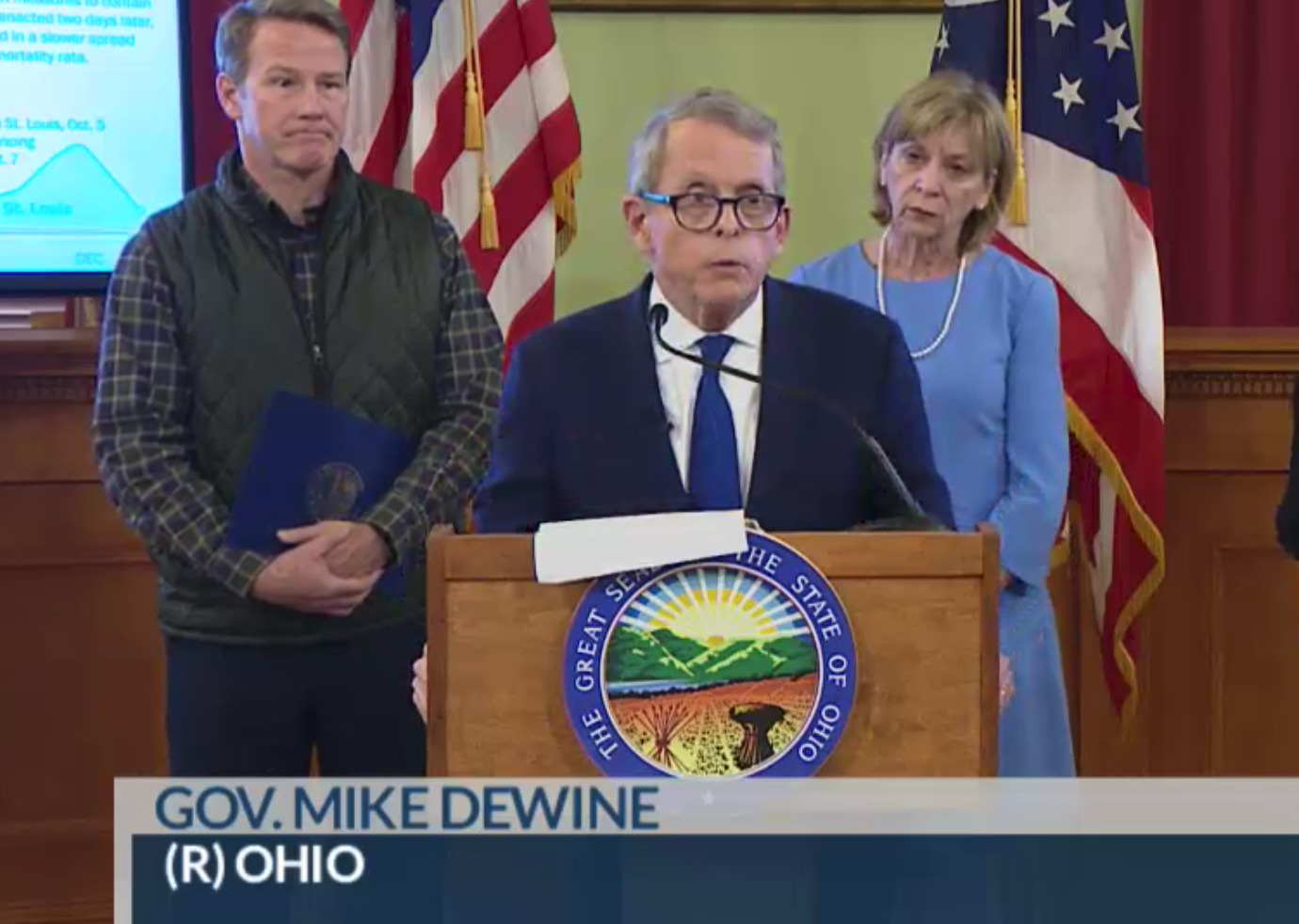
Mike DeWine, the governor of Ohio, has led an unprecedented campaign to fight the coronavirus in the state of Ohio, which has led to both widespread praise and criticism.
DeWine, a 73-year-old Republican who has previously held numerous public office positions, became governor in January 2019.
DeWine’s response to the coronavirus
DeWine made a swift and decisive action to stop the virus before Ohio had a confirmed case. On March 3, DeWine made his first executive decision to cancel the Arnold Classic, a weightlifting competition, and two days later held a summit on the coronavirus. Not long after, on March 9, Ohio reported its first three cases in Cuyahoga County.
Executive orders
On March 9 DeWine declared a state of emergency and began to make orders to protect his state.
On March 12, DeWine met with health officials and made his first order, announcing that schools would be going on a three-week break starting March 16, making him the first governor in the entire country to do so. The Ohio Department of Health also banned any meetings of more than 100 people but included exemptions such as churches and workplaces.
The next day, DeWine supported this movement and made the claim that it is very likely that Ohio has more than 100,000 cases of the virus (only 13 cases were confirmed).
Once more cases were confirmed, DeWine made further, more drastic measures to try to calm the spread of the virus. DeWine ordered all bars and restaurants to close and only offer carryout or delivery; DeWine also expanded unemployment benefits to help citizens directly affected by this order.
DeWine continued trying to protect his state by banning gatherings of more than 50 people, and on March 17, DeWine postponed Ohio’s Primary Election, the day before the election. He also closed all but five BMV’s in the state of Ohio, and activated personnel from the Ohio National Guard to help with this crisis and other humanitarian problems.
DeWine made additional comments to help Ohio, such as suggesting to employers to take the temperature of employees when beginning their shift.
He did not make any executive orders until March 22 when he issued a stay-at-home order which would take place on Tuesday, March 24 at midnight, and would stay in effect until April 6.
This order forces citizens to stay home and that businesses that are not deemed “essential” to close, further preventing human interaction and therefore preventing the virus from spreading at a rapid rate seen in states such as New York and Florida.
Has it made an impact?
As of March 22, 13 days after the first confirmed case of the Coronavirus in Ohio, the state faces 351 cases in 40 counties and has three confirmed deaths. Despite DeWine’s efforts, Ohio still faces countless cases and deaths, and will continue to face problems caused by the virus.
While there is no way to know the exact influence DeWine and his administration’s orders have caused, he considered the chaos that the coronavirus could bring and brought attention and action to the issue before many states considered the virus a problem.
Coronavirus (COVID-19) is a respiratory illness spread between people in close contact with each other or through respiratory droplets from coughing or sneezing. To protect yourself and those around you, cover coughs and sneezes and avoid contact with the eyes, nose and mouth. Symptoms include fever, cough and shortness of breath, according to the Center for Disease Control and Prevention (CDC.)
